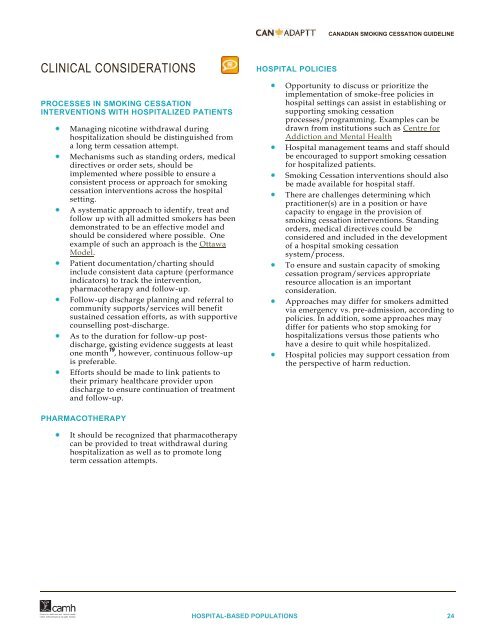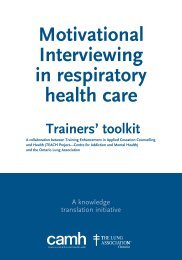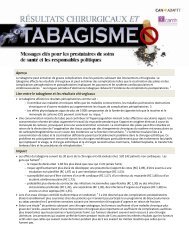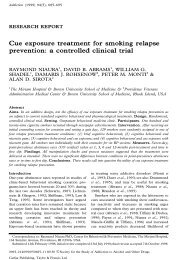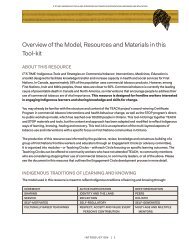Canadian Smoking Cessation Clinical Practice Guideline
Canadian Smoking Cessation Clinical Practice Guideline
Canadian Smoking Cessation Clinical Practice Guideline
Create successful ePaper yourself
Turn your PDF publications into a flip-book with our unique Google optimized e-Paper software.
CANADIAN SMOKING CESSATION GUIDELINECLINICAL CONSIDERATIONSPROCESSES IN SMOKING CESSATIONINTERVENTIONS WITH HOSPITALIZED PATIENTSManaging nicotine withdrawal duringhospitalization should be distinguished froma long term cessation attempt.Mechanisms such as standing orders, medicaldirectives or order sets, should beimplemented where possible to ensure aconsistent process or approach for smokingcessation interventions across the hospitalsetting.A systematic approach to identify, treat andfollow up with all admitted smokers has beendemonstrated to be an effective model andshould be considered where possible. Oneexample of such an approach is the OttawaModel.Patient documentation/charting shouldinclude consistent data capture (performanceindicators) to track the intervention,pharmacotherapy and follow-up.Follow-up discharge planning and referral tocommunity supports/services will benefitsustained cessation efforts, as with supportivecounselling post-discharge.As to the duration for follow-up postdischarge,existing evidence suggests at leastone month 19 , however, continuous follow-upis preferable.Efforts should be made to link patients totheir primary healthcare provider upondischarge to ensure continuation of treatmentand follow-up.HOSPITAL POLICIESOpportunity to discuss or prioritize theimplementation of smoke-free policies inhospital settings can assist in establishing orsupporting smoking cessationprocesses/programming. Examples can bedrawn from institutions such as Centre forAddiction and Mental HealthHospital management teams and staff shouldbe encouraged to support smoking cessationfor hospitalized patients.<strong>Smoking</strong> <strong>Cessation</strong> interventions should alsobe made available for hospital staff.There are challenges determining whichpractitioner(s) are in a position or havecapacity to engage in the provision ofsmoking cessation interventions. Standingorders, medical directives could beconsidered and included in the developmentof a hospital smoking cessationsystem/process.To ensure and sustain capacity of smokingcessation program/services appropriateresource allocation is an importantconsideration.Approaches may differ for smokers admittedvia emergency vs. pre-admission, according topolicies. In addition, some approaches maydiffer for patients who stop smoking forhospitalizations versus those patients whohave a desire to quit while hospitalized.Hospital policies may support cessation fromthe perspective of harm reduction.PHARMACOTHERAPYIt should be recognized that pharmacotherapycan be provided to treat withdrawal duringhospitalization as well as to promote longterm cessation attempts.HOSPITAL-BASED POPULATIONS 24


